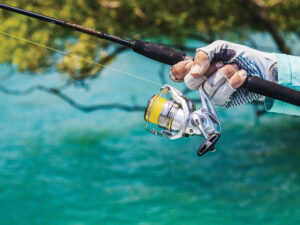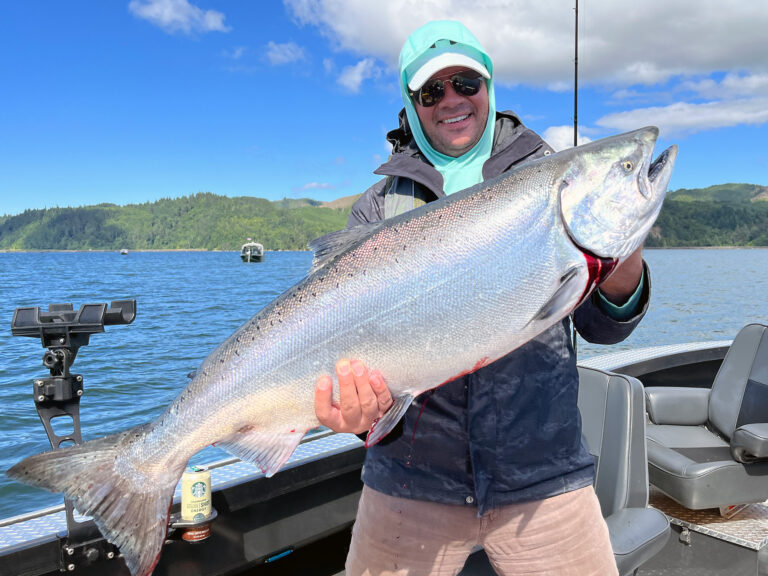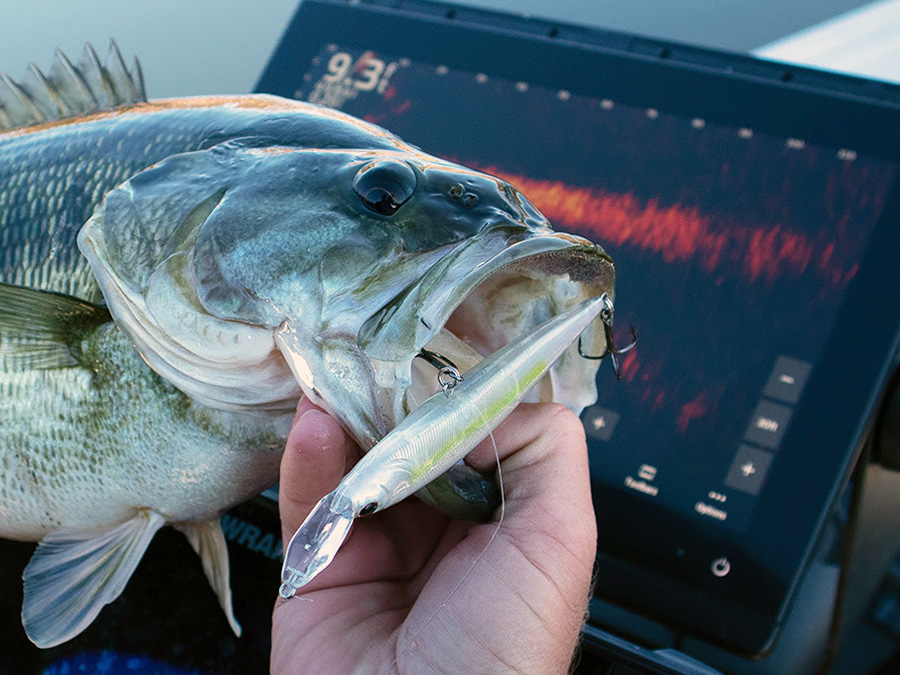
Forward facing sonar (FFS), or what I like to call live sonar, stands as one of the most revolutionary new technologies in angling. Offered by brands such as Garmin, Humminbird and Lowrance, FFS paints real-time, ultrasound-like screen images of structure and fish as far as 500 feet from the boat. Popularized largely by freshwater tournament bass anglers, FFS opens new opportunities to target big fish and determine how they are behaving before wetting a line.
Forward facing sonar is definitely changing the nature of angling. I will let you be the judge if that’s a good change or not. But no matter how you feel, the genie is already out of the bottle. That being the case, Berkley is matching this dramatic technology trend with three lines of remarkable lures designed specifically for fishing with FFS.
“I’m not even going to cast until I see a nice big fish that I want to catch on the screen,” a bass pro told me recently, as he stared intently at the sonar display during our day on the water.
Quicklook: Best Berkley Forward Facing Sonar Lures
- Krej: Uniquely engineered jerk bait with an upside-down bill and backward darting action
- Finisher: A hovering hard bait designed to maximize hang time within the FFS sonar beam
- Power Switch: Soft-plastic bait with an internal leadhead that offers a tantalizing action when twitched, and reflects sonar signals exceedingly well
Breaking Down Berkley’s Lures for Forward Facing Sonar
“Berkley is the leader in science-based bait development, and we take pride in providing anglers with the best solution to help them catch fish in any environment,” says Jon Schlosser, Berkley’s chief brand and product officer. “We’ve known that forward-facing sonar was coming and have spent the past few years learning about the trend in anticipation of it catching on.
“Berkley Labs has been able to create some truly special baits that are proven to catch more fish with FFS,” Schlosser adds. “It’s exciting to see how revolutionary these baits are, not only in their design, but in how they enable anglers to manipulate their baits in ways that have never been done before.”
Krej
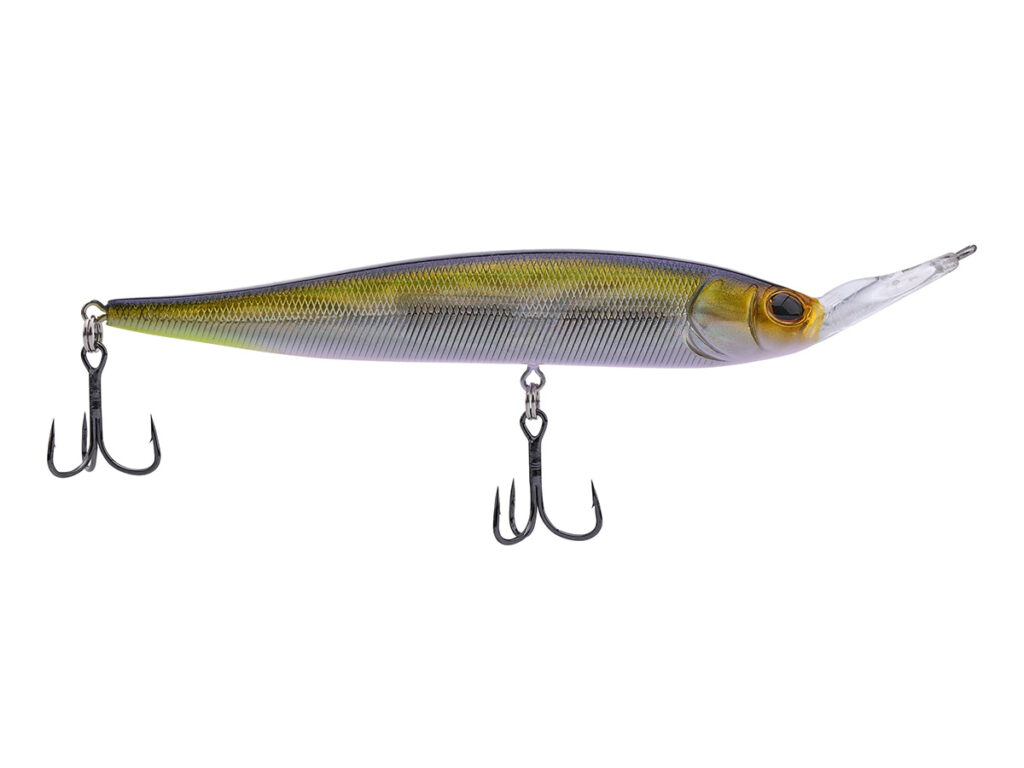
This odd name is actually “jerk” spelled backward, which is fitting since the Krej sports an upside-down bill and works its way upward and backslides toward fish chasing this hard bait. This not only entices fish to bite, but also keeps the lure in the live-sonar beam strike zone for extended periods of time, providing anglers with more chances to see how fish are responding and tease them into biting.
“The Krej is a bait that performs like no other hard bait, especially when paired with forward-facing sonar,” says Dan Spengler, senior project engineer of bait and terminal tackle for Berkley. “Over two years to develop, the bait’s upturned bill gives anglers several ways to manipulate it, providing a solution to the current gaps when using forward-facing sonar.” The 100 mm bait sinks at a foot per second and is available in 10 color patterns. $14.99 – Shop now
Finisher
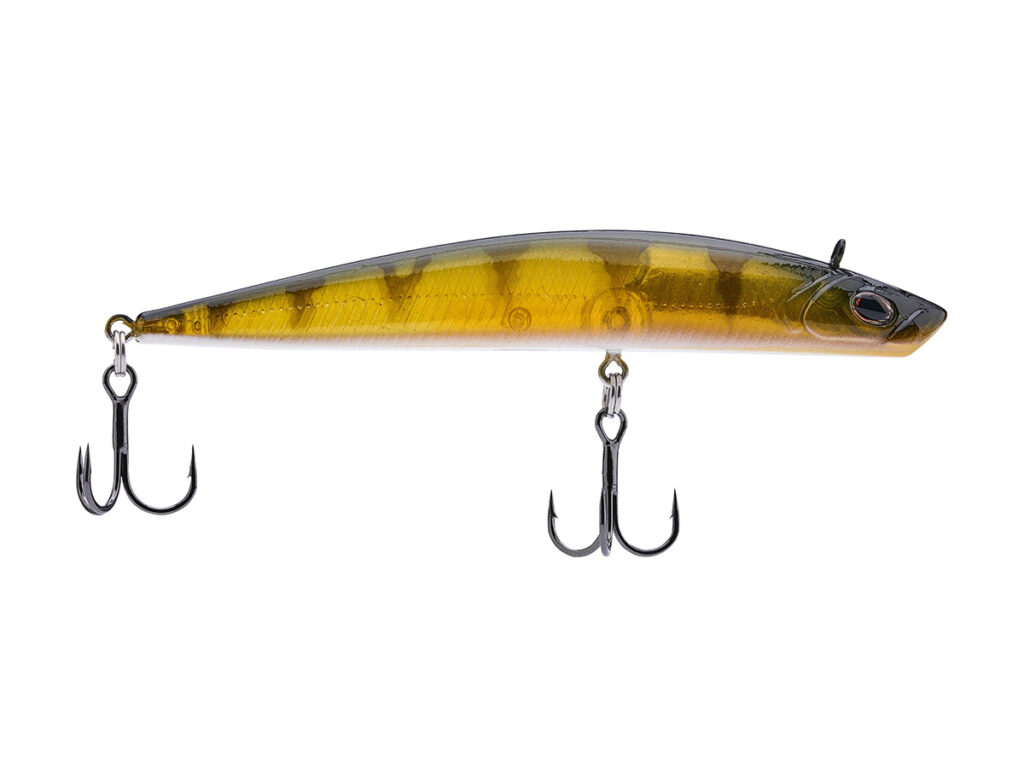
The Finisher hard bait optimizes time in the FFS sonar beam by “hovering” and moving laterally in the water column with minimal retrieve progression. This lets the angler effectively maneuver the bait based on how the fish is reacting to it, as observed on the live-sonar display. The fin-less glide bait’s weight-forward design also allows for precision casts, fast drop-ins, and a wide range of actions, according to Berkley. The perpendicular line-tie maintains knot position at all times.
“What makes this bait unique is that it has no fin structure, which can allow it to do a multitude of actions,” Spengler says. Its flat bottom lets it hover or hang in the water column, enabling anglers to control how the lure is interacting with fish spotted on FFS, he explains. The Finisher comes with two Fusion19 treble hooks, and is available in 500, 700 and 900 mm sizes and 20 color patterns. $8.99 to $10.99 – Shop now
PowerBait Power Switch
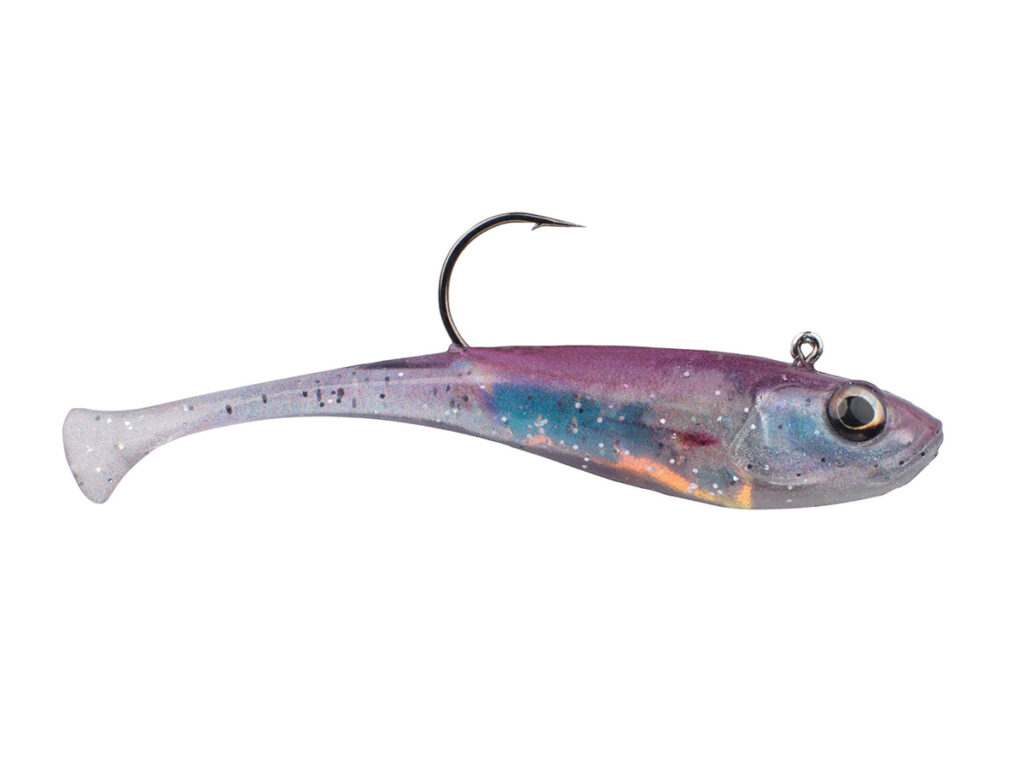
The Berkley PowerBait Power Switch gives anglers the control to quickly switch techniques (hence the name) in response to how the fish are behaving as observed on FFS.
When a fish is located on FFS, the window to catch the fish can close fast. Power Switch lets anglers present their bait as quickly and precisely as possible with an internal leadhead that creates strong sonar returns. The weight-forward design of this soft-plastic bait allows for precision casts, fast fall rates and a wide range of actions. Packed with PowerBait flavor and pre-rigged with a Fusion19 hook, Power Switch appeals to a wide range of species, according to Berkley.
“This bait can sink fast, hover at the angler’s desired water column, with each action working together in one profile,” says Kyle Peterson, project engineer for Berkley. “It gives anglers everything they need to best interact with fish, especially when paired with forward-facing sonar.” The Power Switch features a natural baitfish profile and 3D eyes, and comes in 1.75-, 2.5, 3-, 4.25 and 5-inch versions. It is available in standard, HD Tru Color and holographic “wizard” colors—14 color patterns in all. $9.99 – View all the options
FAQ
How do you catch a fish with a forward facing sonar?
Forward facing sonar itself does not directly catch fish; it is a tool used to locate and track fish underwater. To catch a fish with the help of forward facing sonar, anglers typically use the sonar to identify the presence and location of fish, then cast their line or deploy fishing gear in that area based on the sonar readings.
How does a forward looking sonar work?
It transmits sound waves in a cone-shaped beam in front of the vessel, and then listens for and interprets the echoes of those sound waves bouncing off objects like fish, structures, or the bottom. By analyzing the strength and timing of the returning echoes, the sonar can determine the presence, location, and sometimes even the size and orientation of targets in its field of view ahead of the boat.
Is forward facing sonar worth it?
Whether forward facing sonar is worth it or not depends on the specific application and the advantages it provides compared to other fish-finding technologies. It can be useful for precisely locating fish and structure, but it may also come with trade-offs such as increased cost and power consumption.




